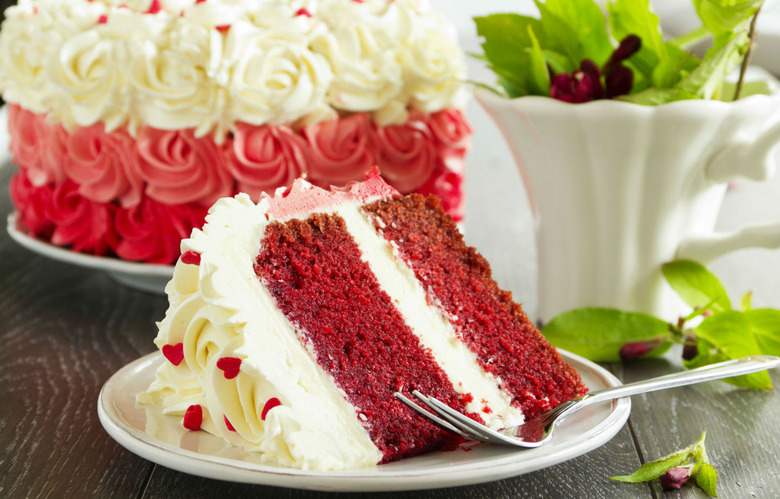Red Velvet Cake Is Red For All The Wrong Reasons
We all love red velvet cake: It's the cake on the counter we're always drawn to but we can never manage to explain why. It's definitely always more to do with its stunning color than its vaguely chocolate-y flavor and its cream cheese frosting. But have you ever stopped to wonder why this amazingly popular cake is actually red anyway?
You may have assumed that many years ago, red velvet cake was naturally dyed red for some important reason, but that's not so. Originally, red velvet cake was known just as velvet cake because of the silky smooth texture it had, a result of being made with almond flour, cocoa, and cornstarch. This cake was created in the 1800s, but it wasn't until the late twentieth century that velvet cake had "red" added to its name. And no, it's not because someone wanted it to be beetroot flavored.
The idea for a red velvet cake began because a "velvet" cake had a slight mahogany tinge. This was a result of the natural reaction between the buttermilk, vanilla, and cocoa powder in the batter. When a man named John A. Adams tasted this cake, he spied an opportunity. Adams was the owner of Adams Extract Company, a business that sold extracts and dyes. Seeing a slightly red-tinged cake inspired him to turn this cake into a bright red treat by filling it with food coloring, which, in turn, would increase the sales of his red food coloring. And it did. Red velvet cake was soon a widely loved sweet treat, and it was made incredibly famous by the arrival of Magnolia Bakery in New York in the '90s. It has only grown in popularity since, so Adams' business plan seems to have turned out exceedingly well.
